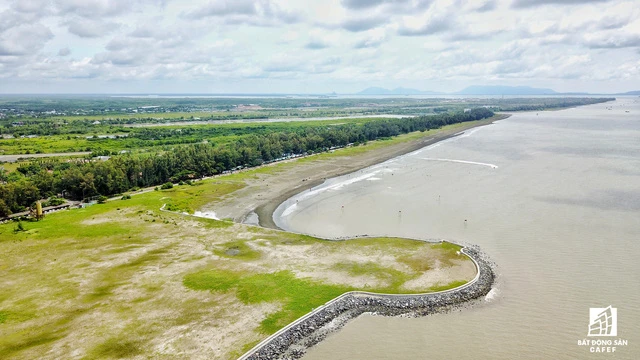
Prime Minister Nguyen Xuan Phuc has appointed Deputy Prime Minister Trinh Dinh Dung to take charge of reviewing the project and its implementation, and finalizing decisions on the seaward expansion plan of the entire project.
Expansion adds thousands of hectares
The project was first approved by the Prime Minister in February 2004 and is now expected to attract and receive huge investments in several different areas for the development and seaward expansion of the Can Gio Urban Area for purposes of boosting tourism. At first, authorities in Ho Chi Minh City had assigned the Saigontourist Holding Company to submit a plan for an area covering 600 hectares. By September 2018, the People’s Committee of Ho Chi Minh City approved a plan to expand the area to cover 2,870 hectares instead.
The notice from the Government Office said the seaward expansion has been a popular trend in the development of urban tourism areas in some countries. Authorities in Ho Chi Minh City showed great responsibility and took cautious steps in studying the expansion of the project. The standing committee of the HCMC Party Committee held a total of seven meetings to gather sufficient information on environmental requirements, impact on the Can Gio mangrove biosphere reserve, effects of river currents, national security issues, traffic flow, land area in the expansion plan, and the capacity of suitable investors.
The Prime Minister has asked the Ministry of Planning and Investment to work closely with the Ministry of Natural Resources and Environment (MONRE). The People’s Committee of Ho Chi Minh City has also been asked to take into consideration very many concerned matters such as assessment of possible impact of strong currents from the rivers and the sea; prevention of soil erosion and landslides which could affect the drainage system in the surrounding areas; an independent assessment of impact on the environment and the mangrove biosphere reserve; and investments in the expansion of the Can Gio coastal tourism urban area that should strictly adhere to all the applicable regulations and international conventions on the world biosphere reserve.
The Prime Minister has designated MONRE to supervise the concerned activities and work closely with UNESCO to ensure the interests and livelihoods of the locals in the designated project area.
Estimated at USD 10 billion
The Ministry of Planning and Investment proposed to the Prime Minister to expand the Can Gio coastal tourism urban area at an investment cost that increased by almost 100 times, from VND 2,614 bn to VND 217,054 bn, which is about USD 10 bn. The goal of the project is to raise part of the large mangrove marsh in the coastal district of Can Gio to an altitude that is above the sea level for the development of an urban area, which would require narrowing the shallow sea area and getting rid of the muddy waters of the Can Gio estuary, making it possible for tourists to enjoy sea bathing.
The project covers areas of Long Hoa Commune and Can Thanh Township, and part of its northern boundary is along the green corridor of Bien Dong 1 Street, Bien Dong 2 Street and the coastal road of the 30/4 tourist site. The area will expand southwards by about one km, eastwards by about 4.8 kms towards Ganh Rai Bay, and westwards by about 2.7 km into Dong Tranh Bay. After raising the ground level to appropriate heights, investors will begin the construction work on structures such as tourist service areas, conference areas, customer service areas, hi-tech facilities, housing and hotel areas.
Out of the 2,870 ha, about 750 ha will be used for housing, public utilities and green zones, while the remaining 2,119 ha will cover concrete construction for living and major facilities, as well as for national defense and security facilities. The sea surface area, canals, beaches for tourists will make up about 750 ha. The entire project is expected to be complete in eleven years from the official date issued by the government to the investor to start the project.
The investor has plans to carry out the project in three stages. The first stage will complete the seaward expansion of 600 ha and part of the construction work as per plan; the second stage will continue the expansion work and add other facilities as well; and in the third stage expansion will cover an area of 2,870 ha and all construction work will be completed on the remaining facilities. Since it is a seaward urban area, the land clearance costs will not be very high. It is estimated to be at around VND 115 bn. The area for compensation for the locals is about 308 ha where the people are currently breeding clams and use it for fishing. In all, 230 households who breed clams will lose their farmland, and the investor will have to negotiate to reach some sort of agreement with them.
So far, the investor has made eleven adjustments to the charter capital, increasing from VND 100 bn in 2004 to current VND 32,560 bn in 2019. With this amount, the investor will be able to meet all the financial requirements to start this massive project, but will need to raise another 85% from banks to finally complete the entire expansion of the Can Gio coastal tourism urban area. The Hanoi Branch of the Joint Stock Commercial Bank for Foreign Trade of Vietnam (Vietcombank) has agreed to play a key role in raising the necessary finances for this huge tourism project.




















